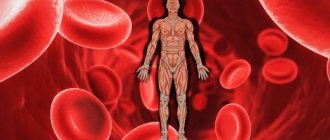Plague of Galen
Medieval depiction of the Roman physician Claudius Galen
The Plague of Galen (an epidemic of the Antonine Plague) was brought to the Roman Empire by troops returning from campaigns in the Middle East. Beginning in 165 AD. BC, it raged throughout Asia Minor and much of Europe for 15 years, claiming the lives of two Roman emperors - Lucius Verus, who died in 169, and his co-ruler Marcus Aurelius Antoninus, who ruled alone until his death in 180 . Nine years later, the disease broke out again, as noted by the ancient Roman historian Dio Cassius, and began to claim up to 2 thousand lives per day in Rome alone.
Under Emperor Vera, the Roman army marched east when the Parthians attacked Armenia. The Roman defense of the eastern lands was difficult, since most of the soldiers fell, struck by disease. The consequences of the epidemic in the rest of the empire looked even worse. Many towns and villages, both in Italy and in the provinces, were completely depopulated. The epidemic spread as far north as the Rhine, affecting Germanic and Gallic peoples beyond the borders of the empire.
The great physician Galen left a description of the epidemic, among the symptoms are fever, diarrhea and sore throat, as well as a skin rash, sometimes dry and sometimes pustular, appearing on the ninth day of the disease. The scant information left by Galen does not allow us to accurately determine the nature of this disease, but many scientists diagnosed it as smallpox. According to various estimates, it is believed that the Plague of Galen killed about 5 million people.
Plague of Justinian
The Plague of Justinian, a pandemic of bubonic plague that swept through Asia Minor, Africa and Europe, struck Constantinople, the capital of the Eastern Roman (Byzantine) Empire, in the late spring and summer of 542 AD. e. After the plague began in Egypt, merchant ships and troops carried it throughout the Western world, allowing the disease to break out repeatedly over the next 50 years.
According to Procopius, the Greek historian and court insider who is our main source, the epidemic began near Ethiopia. Although ancient traditions claimed that diseases came from Africa, there may be some truth to Procopius's story. The plague bacillus appears to have originated in both central Africa and India, with the latter also being the likely home of a species of black rat that carried the plague. Ships sailing the Indian Ocean and Red Sea on their way to Egypt could have brought the rat and the bacillus together in a deadly combination.
People were terrified, many attributed the disease to the touch of a supernatural creature that appeared in a dream or in reality. To prevent demons from sneaking into their homes, people bolted their doors against all visitors, including family and friends. The mild fever that was the first symptom of the plague, however, did not cause alarm, and many people continued to lead their lives as usual until they developed bubonic tumors over the next few days.
Decades of war, famine and natural disasters in Mediterranean lands may have helped the plague reap a rich harvest; In Constantinople alone, about 300 thousand people died during the first year. Even Emperor Justinian suffered from it. The death and devastation caused by the plague prevented him from recapturing the western provinces and restoring the Roman Empire to its former size.
Black Death
The Black Death (black plague, bubonic plague) was a widespread epidemic that devastated Asia and Europe in the mid-14th century. This acute infectious disease, which in its earliest stages and in some places appears to have been predominantly of the pneumonic type (which helps to explain its rapid and frightful spread), is marked by swelling of the lymph nodes or buboes. It was also called the "Black Death" because of the black spots caused by subcutaneous hemorrhages that appeared on the skin of affected people near the time of death. Blood poisoning was rapidly fatal, with victims usually dying within two to four days. Bubonic plague was caused by the bacterium Bacillus pasteurella pestis
(
Yersinia pestis
), transmitted to humans by fleas from infected rats. Pneumonic plague, which occurs as a complication of the bubonic type and as an invasion of the lungs by bacteria, spread from person to person. In addition to black spots on the skin, the plague manifested itself in tumors in the groin or armpit and bleeding from the lungs; it was also characterized by very high fevers, delirium and prostration in its victims.
Originating in Central Asia, the disease killed an estimated 25 million Chinese, Indians and other Asians 15 years before it reached Constantinople in 1347. From there it quickly spread to Genoa, Naples, Venice, Marseille and other Mediterranean ports; ships carrying crusaders returning from the Middle East became a key factor in this regard. By the end of 1347, the plague had struck Dalmatia and the islands of Cyprus and Sicily. Thousands of people in southern France, Spain and Italy died from the black plague before it reached Paris in June 1348 and London a few months later. Raging in England and Ireland, the mysterious disease spread to the Netherlands, Germany, Norway, Sweden, Denmark and Russia, and by 1350, all of Europe (including Iceland and Greenland, according to some sources) was in the grip of the plague.
Pieter Bruegel the Elder "The Triumph of Death" (1562)
Historical estimates of mortality directly from the plague range from 1/4 to 3/4 of the populations of Europe and Asia; at least 25 million Europeans died between 1347 and 1351. They said that half of London (about 100 thousand people) died; 2/3 of Oxford University students died, 4/5 of the population of Marseille. The Pope in Avignon, where half the population had died, sanctified the Rhone River so that corpses could be thrown into it for Christian burial. More than a third of Italy's population died.
At the time, medical and lay authorities throughout Europe sought to provide rational explanations for a virulent plague that was clearly contagious. They published many treatises, trying to explain to the public the causes and symptoms of the disease and find methods of treatment.
The plague was attributed to anything and everything: tainted air and water, hot and humid south winds, the proximity of swamps, lack of cleansing sunlight, excrement and other impurities, putrid decomposition of dead bodies, excessive indulgence in food (especially fruits), God's wrath, punishment for sins and conjunction of stars and planets. Religious fanatics claimed that the terrible plague was brought about by human sins; they wandered from place to place, publicly flagellating themselves. In some places, everything was blamed on cripples, aristocrats and Jews, who were accused of poisoning public wells and were either driven away or tortured and burned. Panic reigned everywhere; men and women knew no other way to stop death except to run away from it.
The devastation caused by the Black Death helped to stop the Hundred Years' War for a time: both sides (the English and the French) signed a truce, which was extended three times (1347–1351); military operations resumed only in 1355.
For many historians, the Black Death marks the end of the Middle Ages and the beginning of the Modern Age. It gave impetus to the reorganization of society, landownership relations between the owner/farmer and the tenant/worker based on rent, which established a different balance between capital and labor.
Worse than cancer: Top 5 incurable diseases
Doctors say that in the early stages almost any disease can be cured. But that's not entirely true
Every day lately, information about Anastasia Zavorotnyuk certainly appears in the top of the most current news - about how the popular actress is struggling with a serious illness. Latest message: Zavorotnyuk has glioblastoma, that is, brain cancer, from which Zhanna Friske, Dmitry Hvorostovsky and Mikhail Zadornov left the earthly world.
In general, oncology is increasingly being called a “celebrity disease”, remembering that it claimed the lives of many famous people - in particular, Bogdan Stupka (70 years old, bone cancer), Oleg Yankovsky (65 years old, pancreatic cancer), Valentina Tolkunova (63 years old, breast cancer), Valery Zolotukhin (71 years old, brain cancer), Alexander Abdulov (54 years old, lung cancer), Anna Samokhina (47 years old, stomach cancer) and others. But it is, in fact, wrong to talk about cancer as an “actor’s” or “artistic” disease. Yes - this is, in fact, a terrible, cruel and insidious disease, but it affects everyone, indiscriminately, regardless of occupation, age, social status, etc.
And, by the way, according to the Russian Ministry of Health, oncology ranks second in the list of the most deadly diseases. On the first - diseases of the circulatory system, from which 283.4 thousand residents of our country died last year. In third place are “external causes of death” (accidents, murders, traffic accidents, etc.). A total of 131.3 thousand of our fellow citizens. In fourth place are diseases of the nervous system, 112.7 thousand deaths, in fifth place are diseases of the respiratory system, 59.8 thousand.
Nevertheless, doctors say: almost all diseases are curable. If, of course, we are talking about identifying them and starting treatment in the early stages.
This applies to both oncology and damage to the circulatory system,” said Alexey Afanasyev, a doctor of the highest category. – Another thing is that the detection of the disease often occurs untimely. If, for example, we talk about cancer, then the sick person often comes to the doctor already complaining about some symptoms. And this, as a rule, is the third or even fourth stage of the disease, because initially it is asymptomatic. Treatment is effective in the first two stages, and then recovery reaches 90 percent.
“Yes, patients have to be under the supervision of doctors for the rest of their lives, but still,” the specialist continued. “Moreover, for many types - such as cancer of the cervix, breast, skin, thyroid, testicle, prostate - a cure rate of over 95 percent has been achieved. But, again, when a tumor is detected at an early stage.”
However, experts admit that there are diseases that are worse than cancer.
Photo: AGN Moscow/Globallookpress
Creutzfeldt-Jakob disease, or "mad cow disease"
Affects the cerebral or spinal cord cortex and nerve endings. This disease is considered a manifestation of spongiform encephalopathy: the brain literally turns into a sponge, which leads to loss of vision, hearing, speech, mental illness, loss of coordination, etc. The cause of its occurrence is the so-called prions, or abnormal proteins, which are harmless while they are normal, but, when transformed into pathogenic ones, trigger a destructive brain disease. And the disease is most often spontaneous: it appears for no reason.
The second option is a genetic mutation, the so-called hereditary (or family) Creutzfeldt-Jakob disease. And the third, but completely insignificant option in terms of the number of sick people, is infection through the blood, from the ingress of damaged particles from a sick person, which can happen during some medical procedures - such as skin or corneal transplants. And modern medicine is powerless against this disease: only symptomatic therapy is possible, bringing relief and prolonging life, but not for long.
Death occurs in 85 percent of cases with a mild form (that is, fifteen out of a hundred have a small chance of getting out with the help of supportive medications), but with a severe form there is no cure.
Fatal familial insomnia
It sounds creepy, but it's true. Another disease caused by prions. And it is inherited. A person actually dies from insomnia.
This anomaly was first noticed in 1979, when Italian physician Ignazio Reuther, while investigating the circumstances of the death of two of his wife’s relatives, suddenly came across the fact that similar deaths had already occurred in their family. The symptoms were similar - first insomnia, then extreme exhaustion and then death. And when, five years later, another relative of theirs died in the same way, his brain was sent for a detailed study.
Photo: Konstantin Kokoshkin/Globallookpress
When the understanding came that this was not an accident, but a real disease, and a very dangerous one, scientists, having studied similar cases, found out: due to a mutation in the 20th chromosome, asparagine, which is needed for the normal functioning of the nervous system, changes to aspartic acid, and then the protein molecule is transformed into a prion. Then a chain reaction occurred: the prion began to transform other protein molecules into similar ones. Eventually, in the part of the brain that is responsible for sleep, accumulations occurred, which became the cause of chronic insomnia, which further led to exhaustion and death. This disease lasts from seven months to three years: there are four phases in total - from obsession with paranoid ideas to ignoring external stimuli.
By the way, in the world there are only forty families registered in which this disease is inherited. But who can say exactly how many there are in principle? Not everyone has undergone research.
Unfortunately, there is no cure for this scourge.
Progressive fibrodysplasia
This is a very rare and severe genetic disease in which muscles, tendons and ligaments turn into bones over time. Children born with this disease have a characteristic pathology: one or more phalanges of the big toe are curved inward, and sometimes there is not enough joint in it.
The most common exacerbation is the appearance of certain lumps under the skin: on the neck, back, forearms. And if the patient is over 10 years old, throughout the body. One of the signs of the disease is swelling of the soft tissues of the head - even with minor damage (with a bruise or even a scratch and an insect bite), which does not subside for a long time, up to a month, without responding to any medications. Surgery does not help, since cutting out the ossified area causes a new focus of bone growth.
According to statistics, one in two million people are born with this diagnosis.
The disease has been known for a long time, since the 17th century, but they have not yet learned how to cure it. However, about three years ago a message appeared that scientists from the University of Pennsylvania had discovered the gene responsible for this mutation, but there were no concrete results yet.
Rabies
Rabies belongs to the category of particularly dangerous fatal infectious diseases caused by the Rabies virus. It is easy to become infected: from the saliva of a sick animal that gets into the wound either during a bite, or if there was, say, a microcrack in the skin. Often, unless, of course, the entire appearance of the attacked animal (this can be either wild - wolves, foxes, jackals, badgers, bats and rodents, or domestic - dogs and cats) does not indicate its rabies, people simply wash the wound, process it and forget about it.
It is easy to become infected with rabies: from the saliva of a sick animal during a bite. Photo: Zamir Usmanov/Globallookpress
The incubation period of rabies lasts from several days to three months, sometimes up to a year. If a person has time to get tested and receive antibiotics, he can recover. And if the first symptoms appear (first the bite site becomes red and swollen, then itching and pain appear, then the temperature rises sharply, malaise, nausea, and headache appear), then death is observed in most cases. The fact is that this virus multiplies in the nerve cells of the human body, forming “Babesh-Negri” bodies; they move at a speed of 3 mm per hour. And when they reach the spinal cord and brain, they cause meningoencephalitis. Death occurs due to asphyxia and cardiac arrest.
By the way, until 2005, rabies was considered absolutely fatal to humans, and only since that time the first cured cases appeared, but they are still few - there are only a few people in the world.
Marburg hemorrhagic fever
Another name for this disease is “green monkey disease.” This is an acute viral disease with high mortality. The infection enters the body through damaged skin and mucous membranes.
The incubation period lasts from two days to two weeks. The disease immediately begins acutely and with a sharp increase in temperature, usually combined with chills.
In the first days, general intoxication is observed (headache, feeling of a “broken body,” muscle and joint pain), then damage to the gastrointestinal tract, dehydration, and impaired consciousness are added. Half of the sick people develop a rash after 4-5 days.
What is characteristic: there is no exact treatment, as well as effective antiviral drugs. Therefore, the main thing that a doctor can do is to carry out a set of therapeutic measures aimed at combating dehydration and overcoming infectious-toxic shock. The mortality rate from Marburg fever can exceed 90 percent.
"Spaniard"
The 1917–1919 influenza pandemic killed more people than all the armies in the First World War. The total worldwide death toll was estimated at more than 21 million lives, and at least 200 (perhaps as many as 500) million people suffered from the “Spanish flu,” as the French and then others began to call this mysterious flu. Although the epidemic ranks with the Plague of Justinian and the Black Death as one of the most catastrophic disease outbreaks in history, it caused far less panic and unrest than other epidemics of the past. Perhaps people's feelings were too dulled by the First World War, battle losses and deaths.
When and where exactly the Spanish flu began remains unclear; however, it was so named because Spain (especially Madrid) was the first point of infection (about 8 million Spaniards fell ill in 1917–1919).
While presenting with the usual flu symptoms (headache, fever, chills, bone and muscle pain), the Spanish flu also caused complications such as severe pneumonia (with purple lips and ears and a pale face), purulent bronchitis, mastoid abscess and heart problems . Called by some “three-day fever,” it developed first calmly, with a cold, and then with a high fever, so that some diagnosed it as pneumonia.
Spanish Flu Hospital
After the signing of the armistice (November 11, 1918), which ended the war, the terrible disease seemed to subside, and after a year it no longer posed a threat. Among the most affected and devastated countries were China, India (where about 12.5 million people died), Persia (Iran), South Africa, Great Britain, France, Spain, Germany, Mexico, Canada, the United States (about 550 thousand Americans died ) and Australia.
In 2005, after nearly a decade of research, scientists from the Centers for Disease Control and Prevention (CDC) Mount Sinai School of Medicine and the Armed Services Institute concluded that the 1917–1919 pandemic was caused by an avian virus that spread to humans some fairly simple mutations. The scientists also focused on the H1N1 virus gene (which they recreated). Virologists fear the H1N1 strain could reappear, perhaps in a form as virulent as it was in 1918. Many pandemics originate in Asia, especially China, where large numbers of ducks, pigs and other virus-producing animals live in close proximity to humans.
All diseases - alphabetical index
This page of our medical encyclopedia contains a list of diseases, their symptoms, causes, and treatment methods. This will make it easier to find the information you need on the site.A
- Brain abscess
- Lung abscess
- Adrenogenital syndrome
- Acromegaly
- Actinomycosis
- Allergy
- Allergy to medications
- Allergic inflammation of the intestines
- Allergic skin reactions
- Alcoholism
- Alcohol addiction
- Albinism
- Amoebic dysentery
- Kidney amyloidosis
- Amylotrophic lateral sclerosis
- Angina
- Aneurysm
- Anemia
- Ankylosing spondylitis
- Anomalies of the female genital organs
- Anomalies of teeth
- Abnormalities of the esophagus
- Appendicitis
- Arthrosis
- Osteoarthritis of the knee joint
- Osteoarthritis of the hip joint
- Pulmonary asbestosis
- Astigmatism
- Ascites
- Atheroma
B
- Basalioma
- Basal cell carcinoma
- Beli
- Infertility
- Pallor
- Muscle diseases
- Nail diseases
- Diseases of the anus
- Diseases of subcutaneous adipose tissue
- Sweat gland diseases
- Diseases of the iris
- Corneal diseases
- Heart muscle diseases
- Diseases of the lacrimal glands
- Ovarian diseases
- Meniere's disease
- Parkinson's disease
- Reiter's disease
- Side pain
- A sore throat
- Chest pain
- Abdominal pain
- Bone pain
- Sacral pain
- Joint pain
- Earache
- Headache
- Muscle pain
- Warts
- Borreliosis
- Fear of heights
- Bronchiectasis
- Bronchitis acute
- Chronic bronchitis
IN
- Vaginismus
- Varicocele
- Autonomic dystonia
- Lymphogranuloma venereum
- Visceral leishmaniasis
- Viruses
- Viral infections
- Sudden hearing loss
- Ectopic pregnancy
- Hydrocele of the testicle
- Lupus erythematosus
- Inflammation of the peritoneum
- Gum inflammation
- Inflammation of the knee joint
- Pneumonia
- Inflammation of the urethra
- Inflammation of the periosteum
- Inflammation of the external female genitalia
- Inflammation of the paranasal sinuses
- Inflammation of the renal pelvis
- Inflammation of the epididymis
- Inflammation of the salivary glands
- Inflammation of the cervix
- Inflammation of the testicles
- Inflammation of the ovaries and oviducts
- Congenital anomalies of the abdominal organs
- Congenital defects of the hip joint
- Dislocations
- Shoulder dislocation
- Eversion of the century
- Rashes
- Lethargy
G
- Gas gangrene
- Hallucinations
- Gastritis
- Hemangioma
- Haemorrhoids
- Chronic hepatitis
- Herpetic dermatitis
- Hydrocephalus of the brain
- Hyperventilation
- Hyperhidrosis
- Hyperemia
- Hyperprolactinemia
- Hyperthyroidism
- Hypertrichosis
- Hypovolemic shock
- Hypothyroidism
- Hypotension
- Hypotrophy
- Worm diseases
- Glomerulonephritis
- Ulcers
- Headache
- Dizziness
- Gonorrhea
- Fungal skin infections
- Flu
- Herniated disc
- Hernias
D
- Colorblindness
- Moronism
- Depression
- Atopic dermatitis
- Contact dermatitis
- Speech defects
- Diaphragmatic hernia
- Meckel's diverticulum
- Esophageal diverticulum
- Colon diverticulum
- Dysentery
- Dysmenorrhea
- Dystrophy
- Esophageal dysfunction
- Diphtheria
- House dust mite
- Trembling (tremor)
AND
- Yellow fever
- Jaundice
Z
- Zavort of the century
- Constipation
- Itching
- Itching in the anus
AND
- Overweight
- Heartburn
- Impotence
- Stroke
- Interstitial nephritis
- Urinary tract infections
- Myocardial infarction
- Curvature of the legs at the knees and shins (X- and O-shaped curvature of the legs)
- Artificial insemination
- Hysteria
- Emaciation
- Ichthyosis
TO
- Carbuncles
- Caries
- Cataract
- Cough
- Keloid scars
- Keratosis
- Caisson disease
- Pancreatic cyst
- Intestinal lipodystrophy
- Cluster headache
- Claustrophobia
- Tick-borne encephalitis
- Cutaneous leishmaniasis
- Nonspecific ulcerative colitis
- Horse foot
- Dupuytren's contracture
- Volkmann's contracture
- Conjunctivitis
- Korsakov's syndrome
- Strabismus
- Clubfoot
- Cretinism
- Torticollis
- Brain hemorrhage
- Bleeding
- Nosebleed
- Xanthoma
- Night blindness
L
- Laryngitis
- Baker's lung
- Leishmaniasis
- Drug addiction
- Lymphogranulomatosis
- Lymphostasis
- Lipoma
- Fever
- KU fever
- Lichen
- Lichen planus red
- Ringworm scaly
- Giardiasis
M
- Malaria
- Chorea
- Mania and delirium
- Persecution mania
- Mastitis
- Mastoiditis
- Mesothelioma
- Meningioma of the brain
- Myasthenia gravis
- Migraine
- Myeloma
- Uterine fibroids
- Sputum
- Hammer toe
- Urolithiasis disease
- Erythrema multiforme
- Muscle pain
N
- Coated tongue
- Addiction
- External curvature of the first toe
- Fat metabolism disorder
- Visual impairment
- Menstrual irregularities
- Cerebrovascular accident
- Urinary dysfunction
- Intestinal circulatory disorders
- Metabolic disease
- Copper metabolism disorder
- Carbohydrate metabolism disorder
- Metabolic disorders in tumor diseases
- Indigestion
- Heart rhythm disturbance
- Sleep disturbance
- Thymus gland dysfunction
- Dysfunction of the male reproductive glands
- Narcissism
- Runny nose
- Acoustic neuroma
- Trigeminal neuralgia
- Neurosis
- Schizoid neurosis
- Neuropathic digestive disorders
- Neurofibromatosis
- Necrosis of the femoral head
- Intestinal obstruction
- Colon obstruction
- Diabetes insipidus
- Nicotine addiction
ABOUT
- Baldness
- Obesity
- Shingles
- Pituitary tumors
- Eye tumors
- Benign bone tumors
- Malignant bone tumors
- Brain tumors
- Tumors of the nasopharynx
- Tumors of the paranasal sinuses
- Tumors of cartilage tissue
- ARVI
- acute respiratory infections
- Psittacosis
- Orchitis
- Weakening of the functions of the adrenal cortex
- Smallpox
- Osteomyelofibrosis
- Acute renal failure
- Acute bronchitis
- Acute lymphocytic leukemia
- Acute myeloid leukemia
- Acute rheumatism
- Condylomas acuminata
- Edema
- Brain swelling
- Pulmonary edema
- Mushroom poisoning
- Smoke poisoning
- Insecticide poisoning
- Drug poisoning
- Urine poisoning
- Arsenic poisoning
- Opiate poisoning
- Food poisoning
- Poisoning from household chemicals
- Poisoning with psychotropic substances
- Plant poisoning
- Lead poisoning
- Hydrocyanic acid poisoning
- Carbon monoxide poisoning
- Hydrocarbon poisoning
- Poisoning at work
- Poisoning by poisonous animals
P
- Felon
- Paralysis
- Paralysis of limbs
- Facial nerve paralysis
- Paranychia
- Paratyphoid
- Periodontal disease
- Clavicle fracture
- Femoral neck fracture
- Intermittent claudication
- Pericarditis
- Dandruff
- Hepatic coma
- Plasmacytoma
- Humeroscapular periarthritis
- Flat feet
- Lichen planus
- High blood pressure
- Increased sweating
- Brain damage in early childhood
- Gout
- Urge to defecate
- Urge to urinate
- Hollow foot
- Polycystic kidney disease
- Polyneuropathy
- Sexual perversions
- Low blood pressure
- Diarrhea
- Heart defects
- Porphyria
- Loss of consciousness
- Acute renal failure
- Chronic kidney failure
- Kidney stone disease
- Premenstrual syndrome (PMS)
- Premature birth
- Premature rupture of amniotic fluid
- Abortion
- Preeclampsia
- Priapism
- Leprosy
- Bedsores
- Prostatitis
- Pimples
- Spring finger
- Psittacosis
- Psychovegetative syndrome
- Psychosomatic illnesses
- Psoriasis
- Hydatidiform mole
- Pemphigus
R
- Radiation exposure to blood
- Ligament rupture
- Cancer
- Vaginal cancer
- Gallbladder cancer
- Uterine cancer
- Bladder cancer
- Liver cancer
- Pleural cancer
- Pancreas cancer
- Penile cancer
- Prostate cancer
- Rectal cancer
- Colon cancer
- Cervical cancer
- Thyroid cancer
- Ovarian cancer
- Cancer metastases
- Multiple sclerosis
- Speech disorders
- Disorders of consciousness
- Sprains
- Rickets
- Vomit
- Rheumatic diseases
- Rhesus conflict
- Rhinitis
- Birthmark
- Erysipelas
- Rosacea
WITH
- Salmonellosis
- Photophobia
- Seborrhea
- hay fever
- Heart failure
- anthrax
- Zollinger-Ellison syndrome
- Carpal tunnel syndrome
- Conn's syndrome
- Guillain-Barre syndrome
- Lyell's syndrome
- Mallory-Weyes syndrome
- Raynaud's syndrome
- Sjögren's syndrome
- Cervical spine syndrome
- Sinusitis
- Syphilis
- Scleroderma
- Shackled shoulders
- Scotoma
- Elephantiasis
- Brain death
- Sunburn
- AIDS
- Spondylosis
- Spondylolisthesis
- Senile psychosis
- Old age
- Pyloric stenosis
- Angina pectoris
- Sterility
- Persistent erection of the penis
- Tetanus
- Stomatitis
- Convulsions
- Calf muscle cramps
- Typhus
T
- Typhoid fever
- Typhus
- Nausea
- Whiplash injury
- Internal organ injuries
- Abdominal injuries
- Lung injuries
- Shoulder injuries
- Pelvic injuries
- Neck injuries
- Skull injuries
- Trichomoniasis
- Toxoplasmosis
- Thrombosis
- Trophic ulcer of the leg
- Workaholism
- Pulmonary tuberculosis
- Hearing loss
- Myasthenia Gravis
U
- Prostate enlargement
- Acne
- Periarteritis nodosa
- Erythema nodosum
- Insect bites
- Poisonous animal bites
- Mental retardation
- Uremia
- Urethritis
- Strengthening the functions of the adrenal cortex
- Drowning
- Bruises
F
- Phantom pain
- Pheochromocytoma
- Pulmonary fibrosis
- Fibroma
- Phobia
- Yaws
- Frigidity
- Boils
X
- Chalazion
- Cholera
- Cholesteatoma
- Chronic renal failure
- Chronic lymphocytic leukemia
- Chronic myeloid leukemia
C
- Cellulite
- Cyanosis
- Cyclothymia
- Cirrhosis of the liver
H
- Scabies
- Squamosal lichen
- Feeling depressed
Sh
- Schizoid neurosis
- Schizophrenia
- Hypovolemic shock
- Shock lung
E
- Eczema
- Seborrheic eczema
- Eclampsia
- Embolism
- Pulmonary embolism
- Endemic goiter
- Endocrine ophthalmopathy
- Encephalitis
- Epilepsy
I
- Duodenal ulcer
- Barley
Malaria epidemics
Malaria, along with tuberculosis and AIDS, is one of the world's leading killers. It is also one of the oldest known infectious diseases. However, because malaria does not leave marks on bones, it cannot be detected from remains.
The earliest information about malaria epidemics appears in the works of ancient Greek and Roman historians, who report that in the process of draining the swamps in the northern part of the Apennine Peninsula, many workers fell ill and began to die en masse. The disease was accompanied by fever, chills, and an increase in the size of the spleen and liver. Infectious diseases are transmitted from person to person after being bitten by female Anopheles
(“malaria mosquitoes”). Epidemics of malaria broke out in many parts of Europe during the Middle Ages and into modern times, with France being particularly hard hit. The first chronicled evidence of fever caused by malaria outside Europe was found in China. They date back to approximately 2700 BC. e., during the reign of the Xia dynasty.
How malaria came to the Americas and the Caribbean is unknown, but it may have arrived with Christopher Columbus in the late 15th century. At that time, the infection was widespread in Europe and Africa, and shortly after the arrival of Europeans in the New World, there were reports of malaria spreading throughout the Caribbean. Not all areas of the New World provided suitable habitat or climate for the mosquito vector, but by the 19th century the infection was widespread in the Mississippi Valley, California's Central Valley, and the coastal lowlands of northern South America.
At the beginning of the 21st century, the incidence rate was 350–500 million cases per year, of which 1.3–3 million resulted in death. According to the latest estimates of the World Health Organization (WHO), there are from 124 to 283 million cases of infection with malarial plasmodia per year and from 367 to 755 thousand deaths from the disease. The majority of cases of infection (almost 90%) occur in sub-Saharan Africa, and the vast majority of infections occur in children under the age of five.
As of 2021, the effectiveness of the current Plasmodium malaria vaccine is considered to be quite low (31–56%). Therefore, malaria epidemics continue to be a key issue on the WHO agenda.
Cholera pandemic
Cholera is an acute intestinal anthroponotic infection transmitted through water, caused by bacteria of the species Vibrio comma
. The bacilli often do not survive in the gastric juices, but when this happens, they multiply rapidly in the digestive tract and cause radical dehydration from which the victim can die within hours. The horror of cholera lay in its symptoms, which included incessant diarrhea and vomiting, severe muscle cramps and prostration. Worst of all, the sudden loss of fluid in the body causes the facial features and soft tissues of the body to dry out, and the discoloration of the skin due to broken capillaries turns the shriveled victim black and blue, causing fear and horror.
Caricature of a cholera patient experimenting with medications. Around 1832
The history of cholera in the Western world is inseparable from the problems of 19th-century urbanization and public water supply. The growing population outpaced the ability of city authorities to develop adequate sewerage systems and provide clean water in sufficient quantities. Unclean water carries the cholera bacillus and causes most cases, but since the bacteria are passed into human feces, tiny particles of which can then be carried into food by unwashed hands or by flies and cockroaches, proximity to raw sewage and poor personal hygiene further contribute to the spread of the disease . Families were crowded into filthy tenements, people lived in coal-mining areas where unsanitary conditions were particularly bad, and laundresses and nurses who tended to the dirty bed linens of the sick were at particular risk.
The disease first appeared in the Sundarbans Forest of the Bay of Bengal in the Ganges Delta, where the bacterium Vibrio cholera
, probably mutated over thousands of years. This organism is found naturally in the environment in some coastal and brackish waters, where shellfish sometimes carry the infection.
However, it was not until the early 1800s, as the British opened new trade routes to India and sent troops across the subcontinent, that cholera began to spread beyond its home territory, first through India and then across the world in a series of huge pandemics. In August 1817, the British government received reports of a "malignant disorder" in the Sundarbans that was killing 20 to 30 people a day. Over the next few weeks, 10 thousand people died. From there, the disease spread throughout the country and then east and west to Nepal, Afghanistan, Iran, Iraq, Oman, Thailand, Burma, China and Japan.
This pandemic had barely subsided when the second began in 1826. Once again the source was the Ganges delta, and again the disease spread rapidly, returning to old habitats but also traveling further afield to the United States, Europe and Egypt. In Cairo and Alexandria alone, 33 thousand deaths were recorded per day.
By 1831, cholera was already in Moscow, devastating the great trading city of Astrakhan. Having reached St. Petersburg, she crossed the border between Europe and Asia, heading to Poland, Bulgaria, Latvia and Germany. The British watched its progress with alarm when, in the autumn of 1831, the disease crossed the North Sea from the Baltic coast of Germany and broke out at Sunderland Wharf. Over the next 70 years, pandemics spread rapidly across the globe, affecting countries on every continent and killing countless millions of people.
The third pandemic occurred in the 1850s and coincided with the Crimean War. In Russia alone, the number of victims exceeded 1 million people. This epidemic was the deadliest in the 19th century.
Today, endemic foci are present in Africa, South America, India and Southeast Asia.
Typhoid
Angel of death poisoning the water. Image from the time of the typhoid epidemic, circa 1912
Typhoid fever and paratyphoid fever, also known as enteric fever, are believed to have a long history. A description of the disease can be found in the writings of the Greek physician Hippocrates, who lived in the 5th century BC. e.
An epidemic in Jamestown, Virginia, in the 17th century killed 6,500 of the 7,500 colonists. During the American Civil War (1861–1855), typhus is believed to have killed about 30,000 Confederate soldiers and 35,000 Union soldiers. In the Spanish-American War of 1898, it affected one-fifth of the U.S. Army, and six times as many people died from the disease as from wounds. In Russia, typhus raged especially actively during the civil war (1918–1922).
Typhoid fever and paratyphoid fever are similar diseases caused by different subspecies of the bacterium Salmonella enterica
, but paratyphoid fever tends to occur in a milder form, there is a lower mortality rate. Enteric fever, like cholera, is closely associated with poor sanitation, which prevails in slums, refugee camps and areas affected by natural disasters, where infrastructure such as sewage and water supplies has been destroyed.
Poster of the RSFSR, 1921
Typhoid fever remains a concern. According to experts, today from 11 to 20 million people a year fall ill with this disease and from 128 to 161 thousand die. Although improved living conditions and the use of antibiotics have sharply reduced morbidity and mortality in developed countries, typhoid fever remains a public health problem in parts of Africa, the Americas, Southeast Asia, and the Western Pacific. In these regions, anyone without access to clean drinking water and decent sanitation is at risk, with children being among the most vulnerable.
Causes of the disease
The causes of diseases can be exposure to various. factors - physical, chemical, biological or mental. For example, frequent causes of B. are mechanical (impacts, sprains, ruptures, compression of tissues and organs, gravitational overloads, etc.), temperature (hypothermia or overheating of the body, frostbite or tissue burns), radioactive, electromagnetic and other influences. Mn. B. are caused by exposure to chemicals. factors: substances that initiate the occurrence of tumors or damage organs with the subsequent development of diseases (for example, diabetes mellitus when the pancreas is damaged by alloxan; hepatitis when the liver is exposed to carbon tetrachloride or ethanol), medications when used incorrectly (mainly in case of overdose) . The reason for the large number of B. are biological. factors, which primarily include: infection (viruses, microorganisms, helminths, prions), excess or deficiency of physiologically active substances - hormones, enzymes; exposure to autoaggressive antibodies and/or leukocytes that cause diseases of immune autoaggression (eg, systemic lupus erythematosus or immunodeficiencies). Impact of mental factors may underlie both mental. disorders (psychogeny), and a number of somatic. diseases (hypertensive B., ulcerative B. of the stomach and duodenum, etc.; see Psychosomatics).
Based on the origin, the causes of B. are divided into exogenous, that is, external to the body (for example, mechanical trauma, infection, exposure to electric current), endogenous, or internal, acting within the body (for example, deficiency or excess hormones, enzymes, chromosomal or gene mutations), as well as infectious and non-infectious (see also Etiology).
However, the presence of a causative factor does not always lead to its occurrence. The possibility of occurrence, features of the development and outcome of disease are determined, on the one hand, by the properties of the causative factor, and on the other, by the reactivity of the body, as well as by the conditions in which the interaction of the body and the cause of the disease occurs.
HIV AIDS
The HIV/AIDS pandemic is caused by the human immunodeficiency virus (HIV), which (in almost all cases) eventually destroys the immune system, leading to the fatal infections that characterize acquired immunodeficiency syndrome (AIDS). In the late 1970s, doctors first documented people with unexplained severe immunosuppression, but a clear syndrome was not identified until June 1981. Initially discovered in Africa, the Western Hemisphere, Australia and New Zealand, the epidemic reached almost every region of the globe by the mid-1990s; At the end of the decade and at the beginning of the 21st century, the rate of spread of HIV infection increased sharply in Eastern Europe, Central and Southeast Asia. Delays, omissions and inconsistencies in case reporting (not to mention the frequency of misdiagnosed symptoms) have made tracking the epidemic difficult. More than 32 million people have died from AIDS since the HIV/AIDS pandemic began in 1982, and in 2018 there were an estimated 37.9 million people living with HIV worldwide.
HIV is deadly because it attacks the cells that coordinate almost all phases of the immune response. Shortly after contracting the virus, a person may develop a short-term feverish illness similar to the flu or mononucleosis. After “recovery,” no other signs of infection may appear, sometimes for 10 or 15 years. However, during this asymptomatic period, the virus is active and can be transmitted to other people. By invading immune cells called CD4 lymphocytes, HIV causes them to become viral factories, sending more HIV to infect other cells in the blood as well as several tissues in the body. At least in the early stages, the immune system copes with the problem of HIV by creating immune cells daily to replace those destroyed by the virus. But HIV almost always wins. Even in the absence of symptoms, it constantly makes copies of itself, and is prone to errors in the process; With such a high mutation rate, HIV changes to become capable of resisting any weapon in the immune system's arsenal, including drugs. At some point, the continuous onslaught of HIV can lead to various non-fatal symptoms such as fever, fatigue, diarrhea, night sweats, swollen lymph nodes, recurrent yeast infections and forgetfulness.
The virus can be transmitted through direct contact of damaged or intact mucous membranes or damaged skin of a healthy person with the biological fluids of an infected person: blood, pre-seminal fluid (released throughout sexual intercourse), sperm, vaginal secretions, breast milk.
Transmission of the virus is more likely to occur through the use of contaminated needles and syringes (especially by injection drug users), as well as through blood transfusions (if medical personnel fail to comply with established blood donation screening procedures). Also, transmission of the virus can occur between mother and child during pregnancy and childbirth (infection through the mother’s blood).
At the moment, there is no vaccine against HIV, although news appears quite often that more and more new drugs are being successfully tested.
In January 2021, Chinese authorities confirmed the birth in Shenzhen of the world's first genetically modified people, who had the CCR5 gene responsible for interacting with HIV edited, and also began an investigation into biologist He Jiankui. It is assumed that genetically modified children will not be able to get HIV, but the experiment itself remains questionable.
Systematization of diseases
Attempts have long been made to create a nomenclature and classification of B. B. nomenclature is a list (catalogue) of generally accepted names and descriptions of departments. diseases. When developing nomenclature, it is important to take into account the need for the correct name of B., reflecting its causes, fundamentals. mechanism of development, manifestation. Classification of diseases is a system of distributing them into classes based on certain criteria. In the current International the classification of diseases (ICD) of the tenth revision used the following criteria: cause (hereditary, infectious, etc. B.); the main link in the pathogenesis of B. (dystrophy, arterial hypertension, immunopathological condition, etc.); basic localization (B. blood systems, respiratory organs, heart, eyes, liver, etc.); age of the patient (B. of newborns, childhood B., diseases of the elderly and senile age); basic principle of treatment (surgical, therapeutic diseases). Along with those indicated, other criteria and approaches to the classification of diseases are used, which makes them not always convenient and unambiguous (for example, the identification of female B., organic or functional B., etc.). However, there is no classification of diseases, which would be based on a single criterion (or a limited number of criteria) for their classification, which would be convenient from the position of a practicing physician, other categories of physicians, as well as workers in other specialties. See also Nosology.
Ebola fever
The first officially recorded case of the Ebola virus disease is the story of the Flemish nun, Sister Beata. She died in a clinic in Kinshasa, in what is now the Democratic Republic of the Congo (DRC), in September 1976, suffering from terrible symptoms, including heavy bleeding. A few days later, the nun who brought Sister Beata to the hospital fell ill with the same symptoms. She was also admitted to the clinic, and she also died. She was followed by a young nurse caring for the nuns.
As Sister Beata lay dying, samples of her blood were sent to a research laboratory in Antwerp.
When the team examined the tissue samples under an electron microscope, they saw previously unknown worm-like structures that looked nothing like yellow fever but bore some resemblance to another deadly hemorrhagic disease called Marburg virus, which is indigenous to Africa. Marburg was only identified nine years ago in Germany, when pharmaceutical workers fell ill after working with monkeys imported from Uganda. Seven of the 25 people directly infected by the monkeys died, and six more became ill after contact with the victims. By then, the mysterious Yambuku disease outbreak had raged for three weeks, killing at least two hundred people. Three weeks after Sister Beata's death, the Centers for Disease Control and Prevention (CDC) announced the discovery of a deadly new virus, later named Ebola after the river near the Yambuku mission.
Since then, five strains of the Ebola virus have been identified. Four of them cause disease in humans: Ebola virus (Zaire ebolavirus), the Yambuku strain, the deadliest; Sudanese virus (Sudanese ebolavirus); Thai-Forest virus (Tai-Forest ebolavirus); Bundibug virus (Bundibug ebolavirus). Fifth, Reston virus ( Reston ebolavirus
), caused disease in monkeys and pigs, but not in humans.
Since 1976, the disease has regularly broken out in Africa, especially in the DRC and Uganda. Because it often occurs in isolated, sparsely populated areas, it is believed that the disease sometimes goes unreported.
From 1989 to 1994, four isolated cases of infection with the Reston strain of virus were reported in laboratories in developed countries, including the United States and Italy. However, all of these incidents involved laboratory monkeys.
Then, in March 2014, everything changed. Ebola struck West Africa, first in Guinea and then in Liberia and Sierra Leone. Over the next two years, the virus spread throughout the world, first affecting Mali, Nigeria and Senegal, and then from Africa to Italy, Spain, the UK and the US.
In the summer of 2014, panic gripped the world and Ebola dominated the news agenda for months and was compared to the great epidemics of the Middle Ages. From 2014 to 2016, 28,616 people worldwide contracted the disease and 11,310 of them died, with the vast majority of cases occurring in West Africa.
In 2021, the WHO declared the 2014 pandemic over and Ebola, at least for now, was no longer a threat. However, in the summer of 2021, Ebola resurfaced in a remote part of the DRC, infecting eight people, four of whom died. Despite the WHO statement, the question of when such a devastating epidemic as Ebola will end remains highly debatable.
Eye diseases in humans: list, symptoms
The reason for this is many factors. For example, the rapid development of computer technology and the deterioration of the environmental situation every year. Next, we will consider the most common diseases, and also highlight their characteristic symptoms.
Pathology of the optic nerve
Glaucoma
- a chronic disease. Due to increased pressure inside the eyes, optic nerve dysfunction occurs. As a result, vision decreases, which may disappear in the future. The disease progresses very quickly, so the patient risks completely losing his vision if he delays going to the doctor. Signs: impaired lateral vision, black spots, “hazy” images, inability to distinguish objects in the dark, colored rings appear in bright light.
Ischemic optic neuropathy
– circulatory disorders in the intraocular or intraorbital region. Symptoms: decreased visual acuity, appearance of “blind” spots in some areas. Reducing viewing angle.
Ischemic neuropathy
Neuritis
- infection. An inflammatory process in the optic nerve is characteristic. Signs: loss of sensitivity in the area around the eye, pain, weakening of the muscles associated with the optic nerve.
Nerve atrophy
– a disease characterized by dysfunction of arousal conduction. Color perception and viewing angle are impaired. Vision decreases and a person can become completely blind.
Nerve atrophy
Pathology of the eye orbit, eyelids, lacrimal canals
Blepharitis
- inflammation that occurs along the edges of the eyelids. Symptoms: swelling of the tissue, accompanied by burning and redness. The patient feels as if a speck has gotten into his or her eye. There is itching and characteristic discharge. Bright light is difficult to perceive, tearing, pain. Dry eyes and peeling of the eyelid margins may occur. After sleep, purulent scabs form on the eyelashes.
Blepharitis
Cryptophthalmos
- a common disease in which the edges of the eyelids fuse together. This causes the palpebral fissure to narrow or even disappear.
Lagophthalmos
– a pathology characterized by a violation of the closure of the upper and lower eyelids. As a result, some areas remain open all the time, including during bedtime.
Turn of the century
– the place where eyelashes grow is turned towards the eye socket. This creates severe discomfort due to rubbing and irritation of the eyeball. Small ulcers may form on the cornea.
Turn of the century
Coloboma of the century
- disturbance in the structure of the eyelids. Usually occurs along with other morphological defects. For example, cleft palate or cleft lip.
Swelling of the eyelid
– localized accumulation of excess fluid in the tissues around the eyelid. Symptoms: local redness of the skin, discomfort. Eye pain worsens when touched.
Swelling of the eyelid
Blepharospasm
- looks like a convulsive contraction of the facial muscles, as if the person is quickly squinting his eyes. Not controlled by the will of the patient.
Ptosis
– drooping of the upper eyelid. Pathology is classified into several subtypes. In some cases, the eyelid droops so much that it completely covers the eyeball.
Ptosis
Barley
– an infectious disease of an inflammatory nature that occurs with pus discharge. Signs: swelling of the edges of the eyelids, redness and peeling. Pressing is accompanied by severe pain. Discomfort (feeling of a foreign object in the eye) and lacrimation are common. The acute form is characterized by signs of intoxication - loss of strength, fever, headache.
Barley
Trichiasis
– improper eyelash growth. The danger is that pathogens can easily enter the eyes. This provokes inflammation, conjunctivitis and other problems.
Dacryocystitis
– an infection of the tear duct that causes inflammation. There are several types of pathology: acute, chronic, acquired, congenital. Symptoms: painful sensations, the lacrimal sac is red and swollen, suppuration of the canals and constant tearing.
Dacryocystitis
Pathology of the tear-producing system
Dacryodenitis
- damage to the lacrimal glands. It occurs due to chronic pathologies, or due to infection entering the body. If there is a disruption in the functioning of the circulatory system, the disease can take a chronic form. Symptoms: the upper eyelid becomes red and swollen. In some cases, the apple of the eye protrudes. If dacryodenitis is not treated, the inflammation spreads, ulcers form, a high temperature rises, and general malaise appears.
Dacryoadenitis
Lacrimal gland cancer
– develops as a result of abnormal activity of gland cells. Tumors can be either benign or malignant. The second group includes, for example, sarcoma. Signs: pain in the eyes and head. Associated with an increase in formation that puts pressure on the nervous tissue. In some cases, the pressure is so strong that it causes delocalization of the eyeball, making it difficult for them to move. Additional symptoms include swelling and loss of vision.
Pathology of the connective membrane of the eye
Xerophthalmia
– an eye disease during which tears are produced less than normal. There are several reasons for this: chronic inflammatory processes, various injuries, tumors, long-term use of medications. Elderly people are at risk.
Conjunctivitis
- inflammation that occurs in the conjunctival mucosa. It can be allergic, infectious and fungal. All of these varieties are contagious. Infection occurs both through physical contact and through everyday objects.
Tumors of the conjunctiva
– appearing in the coal on the inner side of the mucosa (pterygium) and forming in the area of the connection with the cornea (pinguecula).
Lens pathology
Cataract
– gradual clouding of the eye lens. The disease develops very quickly. It can affect one eye or both. In this case, either the entire lens or one part is damaged. The main category of patients is elderly people. It is this disease that can reduce vision in a very short time, even to the point of blindness. In young people, cataracts are possible due to injuries or somatic diseases. Symptoms: rapid loss of vision (this forces you to change lenses very often), inability to distinguish objects in the dark (“night blindness”), impaired color perception, eyes get tired quickly, and in rare cases, double vision.
Cataract
Lens abnormalities
– cataracts, bifaf, spherophakia, lens luxation, coloboma developing from birth.
Retinal pathology
Retinitis (retinal pigmentary dystrophy)
– a disease manifested by the occurrence of inflammation in various parts of the retina. The causes include injury to the organs of vision and prolonged exposure to sunlight. Symptoms: the normal field of vision narrows, visibility decreases, the image doubles, insufficient visibility at dusk, characteristic colored spots appear before the eyes.
Retinal detachment
– a pathology in which destruction of the retina is observed. Its inner layers begin to peel away from nearby epithelial tissues and blood vessels. In most cases it is treated surgically. Lack of treatment results in vision loss. Signs: “fog” before the eyes, distortion of the geometric shape of objects, sometimes flashes of light and bright sparks flash through.
Retinal detachment
Retinal angiopathy
– destruction of the structure of the choroid in the eyes. This disease is caused by physical trauma, high intraocular pressure, disturbances in the functioning of the central nervous system, diseases of the circulatory system (arterial hypertension), poisoning, and pathological defects in the morphology of blood vessels. Symptoms: noticeable decline in vision, blurred vision, foreign flickers, image distortion. In the most severe cases, vision loss occurs.
Retinal dystrophy
– an extremely dangerous disease that can have a wide variety of causes. The tissue of the retina of the eye dies or decreases. This can happen if qualified assistance from specialists is not provided in a timely manner.
Corneal pathology
Keratitis
– an inflammatory process that affects the cornea of the eye. As a result, clouding of the cornea and the occurrence of infiltrates. The cause may be an infection: viral, bacterial. Injuries can also trigger the development of the disease. Symptoms: lacrimation, redness of the mucous membrane of the eye, atypical sensitivity to bright light, the cornea loses its normal properties - shine, smoothness. If treatment is neglected, the infection spreads to other areas of the visual system.
Keratitis
Belmo
– formation of scar tissue on the cornea of the eye, its persistent clouding. The cause is prolonged inflammatory processes in the body or injury.
Belmo
Corneal astigmatism (keratoconus)
– degeneration of the cornea, which occurs due to increased pressure inside the eye. This leads to a change in the shape of the cornea of the eye. Symptoms: light fringe around the light bulbs, immediate decrease in vision in one of the eyes, myopia.
Keratoconus
Change in eye refraction
Myopia (myopia)
– a refractive error in the eye, in which a person has difficulty seeing distant objects. In case of myopia, the image is fixed in front of the retina. Signs: poor discrimination of distant objects, discomfort, rapid eye fatigue, pressing pain in the temples or forehead.
Myopia
Farsightedness (hypermetropia)
– a refractive error in which the image is read behind the retina, is the opposite of myopia. In this case, the patient has difficulty seeing both near and distant objects. Symptoms: very often there is blurriness before the eyes, sometimes the patient exhibits strabismus.
Farsightedness
Astigmatism
– the disease is characterized by the inability to focus light rays on the retina. Usually appears in people with physiological disorders of the visual organs: cornea, lens. Symptoms: blurred and unclear image, a person gets tired quickly, often complains of a headache; in order to see something, one has to strain the eye muscles.
Astigmatism
Other eye diseases
Nystagmus
– uncontrollable oscillatory movements of the eyeballs.
Lazy eye syndrome or amblyopia
– a pathology in which the eye, due to damage to its muscles, stops working and making movements.
Anisocoria
– difference in pupil size. Basically, it appears with all kinds of eye injuries. Involves acute sensitivity to light and decreased vision. Sometimes this pathology indicates a disruption in the functioning of one of the parts of the brain - the cerebellum.
Anisocoria
Episcleritis
- inflammation that forms in the episcleral tissue. First, redness appears near the cornea, then this area swells. Signs: feeling of discomfort, eyes hurt from bright light. There are discharges from the connective membrane. In most cases, episcleritis goes away on its own.
Episcleritis
Aniridia
– complete absence of the iris of the eye.
Aniridia
Polycoria
– an eye defect when a person has several pupils.
Polycoria
Ophthalmoplegia
– a disease when the nerves of the eye that are responsible for its movement cease to function correctly. This causes paralysis and the inability to rotate the eyeballs. Symptoms: eyes are turned to the nose, do not change this position.
Exophthalmos
– pathological exit of the eyeball beyond the orbit of the eye, occurs due to swelling of its tissue. In addition to the main symptoms, redness of the eyelids and pain when touching the inflamed area are noted.
Diplopia
– a disorder of the visual system, consisting of constant double vision of visible objects.










